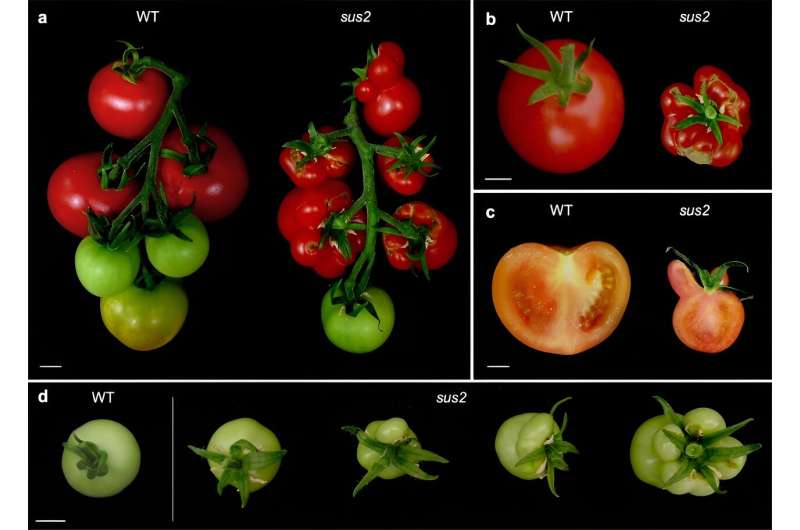This article has been reviewed according to Science X's editorial process and policies. Editors have highlighted the following attributes while ensuring the content's credibility:
fact-checked
peer-reviewed publication
proofread
Tomato blossoms unfold new insights: Key gene TM6 controls flower development

The genetic tapestry governing flower development in plants is intricate, with MADS-box transcription factors identified as the primary architects of floral morphology. While model species have been extensively studied, the genetic nuances in crops like tomatoes are still largely uncharted.
Addressing these knowledge gaps is essential for unraveling the complexities of flower development and male sterility in tomatoes.
Scientists at the Universidad de Almería have achieved a notable milestone in botanical research with their examination of tomato flower development, as detailed in a study published in Horticulture Research on January 16, 2024.
The research zeroes in on the TOMATO MADS-BOX 6 (TM6) gene and its influential role in shaping the floral landscape of tomatoes.
The research team characterized a tomato mutant, dubbed succulent stamens 2 (sus2), which presented pronounced deviations in floral development. The mutants exhibited diminished petal size and stamens that morphed into carpel-like structures, culminating in male sterility due to a lack of viable pollen.
Meticulous genetic scrutiny pointed to a single nucleotide deletion in the TM6 gene as the genetic lesion. This gene, a member of the B-class MADS-box gene family, is integral in defining floral organ identity.
The mutation in TM6 disrupts not only the identity of petals and stamens but also the transcriptional harmony of other MADS-box genes pivotal to reproductive development.
The study's transcriptomic dissection underscored a significant downregulation of pollen development genes and an upregulation of carpel-specific genes, underscoring TM6's critical function in preserving the delicate balance of gene expression vital for proper floral development.
Dr. Juan Capel, the principal investigator at Universidad de Almería, remarked, "Our elucidation of TM6's role in the floral development of tomatoes is a significant stride forward in plant reproductive biology.
"The potential to modulate this gene paves the way for the generation of male sterile lines, a key element in hybrid seed production. This study not only bolsters our foundational understanding of plants but also holds practical ramifications for agricultural strategies."
The TM6 gene's role in tomato flower development is a breakthrough with broad implications for plant science and agriculture. Its manipulation could lead to the development of male sterile tomato varieties, beneficial for hybrid seed production.
This advancement may improve crop yields, resistance, and quality, with the potential to enhance breeding programs and contribute to global food security.
More information: Rocío Fonseca et al, Insights into the functional role of tomato TM6 as a transcriptional regulator of flower development, Horticulture Research (2024). DOI: 10.1093/hr/uhae019
Journal information: Horticulture Research
Provided by TranSpread





















